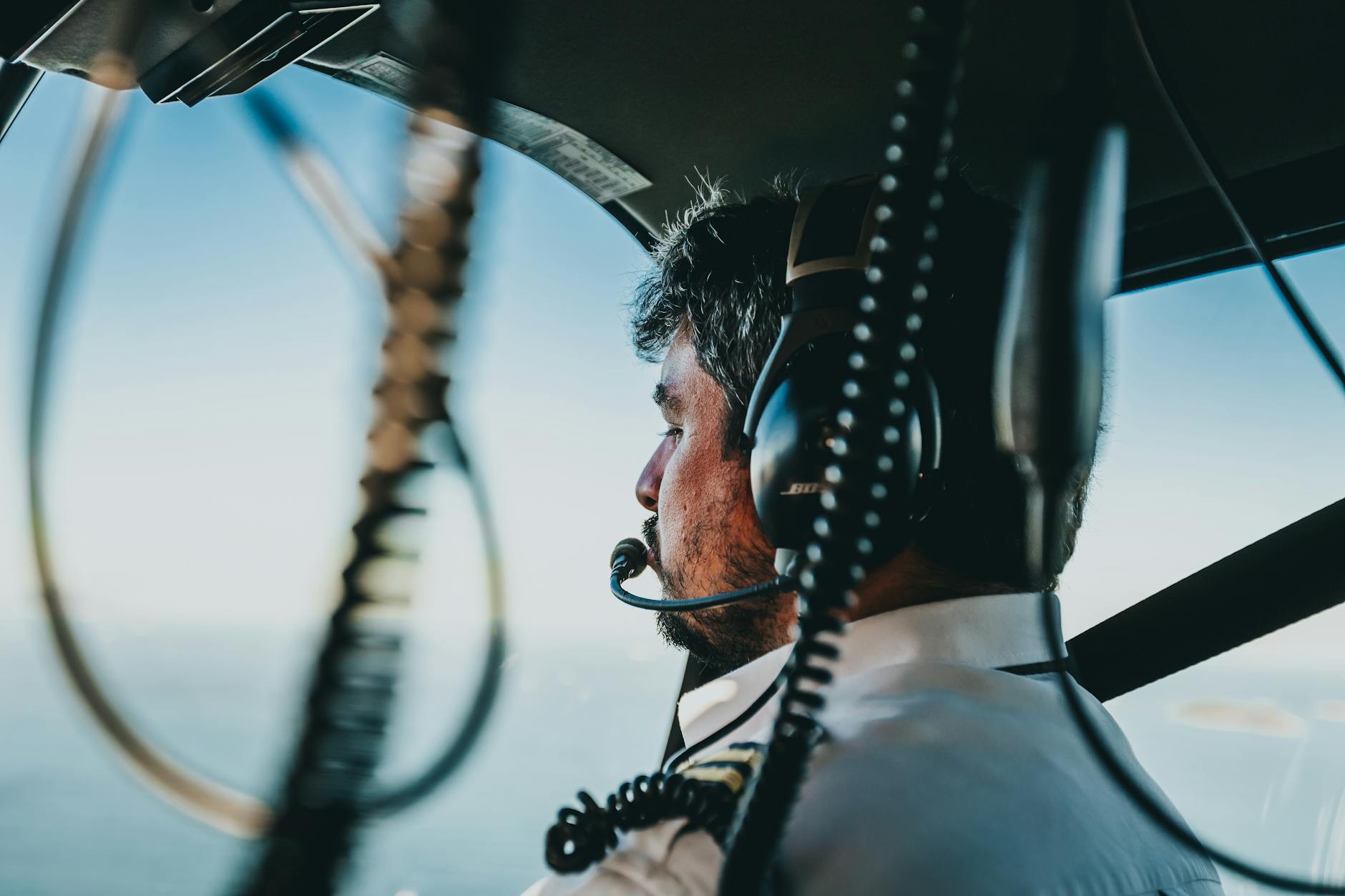Have you ever listened to a conversation between a pilot and the air traffic controller (ATC) during a flight? If yes, then for sure you noticed that they mention strange words in their conversations Like ‘Romeo’, ‘Juliet’ and ‘Hotel’ for example! But why they are saying this on their flight?! Of course, you know our normal English letters (A, B, C,…etc.), and because certain letters sound very similar, the International Civil Aviation Organization (ICAO) created what is called the “International Radio Telephony Spelling Alphabet”, the Phonetic Aviation Alphabet.
But why did the ICAO create this language?
In order to be sure that letters are pronounced and understood correctly, no matter what language is spoken, the aviation alphabet helps to avoid mistakes. This alphabet takes letters and makes them easier to understand, even with interference and static. Let’s take an example, look at the photo below:

Take a look at these letters ahead of the tail; the letters are F-GSQR; this would be translated over the radio as “Foxtrot Golf Sierra Quebec Romeo”.
Aviation Alphabets
Letters are listed below with their corresponding words, so you can have a better understanding of the aviation alphabet:
ICAO Letters:
- A: Alpha
- B: Bravo
- C: Charlie
- D: Delta
- E: Echo
- F: Foxtrot
- G: Golf
- H: Hotel
- I: India
- J: Juliet
- K: Kilo
- L: Lima
- M: Mike
- N: November
- O: Oscar
- P: Papa
- Q: Quebec
- R: Romeo
- S: Sierra
- T: Tango
- U: Uniform
- V: Victor
- W: Whiskey
- X: X-ray
- Y: Yankee
- Z: Zulu

ICAO Numbers:
- 0: Zero
- 1: One
- 2: Two
- 3: Three
- 4: Four
- 5: Five
- 6: Six
- 7: Seven
- 8: Eight
- 9: Niner
- 100: Hundred
About the Aviation Alphabet
The International Civil Aviation Organization (ICAO) is an agency of the United Nations that decided the phonetic aviation alphabet needed to be standardized. Although all words are English, the words are sounds common to all languages and can be pronounced no matter the language spoken. The final alphabet was completed in March of 1956, with simple changes made to accommodate different pilots in different countries. Over the years, the words listed with the corresponding letters have remained the same, but some shorthand slang has developed.
Youssef Yahya is the CEO and Founder of Aviation for Aviators, a platform dedicated to the aviation industry. With over 3 years of experience as an aviation writer, Youssef is passionate about sharing his insights on aviation, entrepreneurship, and the broader business landscape. As a Teaching Assistant in Entrepreneurship at Nile University, he also nurtures the next generation of entrepreneurs. When he’s not exploring the skies or business ventures, you can find him saying, ‘Drag your coffee, and let’s talk aviation, entrepreneurship, and football.’
You might also like:
- Asia’s Oldest Airport: Bangkok’s Don Muang Airport Over The Years
- Air Algérie Airbus Order: A330-900s and A350-1000s Join the Fleet
- The Incredible Survival Story of British Airways Flight 5390
- Seven-Week Strike Ends as Boeing Workers Accept New Pay Deal
- Investigation Begins in Haneda Airport Collision
Discover more from Aviation for Aviators
Subscribe to get the latest posts sent to your email.


Bravo! My dad was a private pilot (great story — Dad was Bandleader at Disneyland. After working at 20th Century Fox in the studio orchestra on films and TV, his day job, Dad flew his plane nightly, from Santa Monica to Fullerton Airport, hopped in the band truck, played the gig at the Park — then flew back to Santa Monica, and drove to our beachfront home in Malibu.) One day my little brother and I decided to learn the Aviation Alphabet so we had a better idea what all that talk was on Dad’s plane’s radio. It came in handy for me, years later, when I learned to fly. And it still serves me well in many ways. I think everyone should learn it! :)) Dawn
https://journalofdawn.wordpress.com/20150325family-of-flying/
Thank you for sharing your story with us, you are right its so useful!!
Are you familiar with the excellent book, Flightlines, by Richard Drury? If you can find a copy (I believe it’s currently out of print), you will treasure it, right up with Night Flight, and Wind, Sand and Stars, by Antoine De Saint-Exupery. Best to you!
If you’re looking for a great aviation book to read, I suggest the big book of planes by Roland white, it’s got many interesting facts about different subjects,Including one on this subject too.